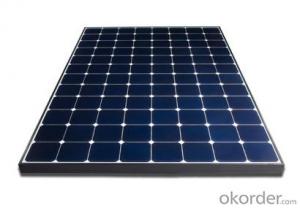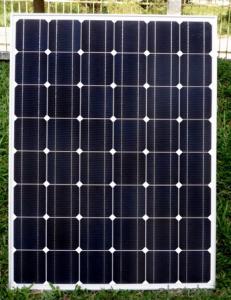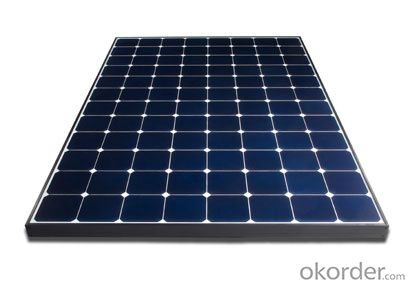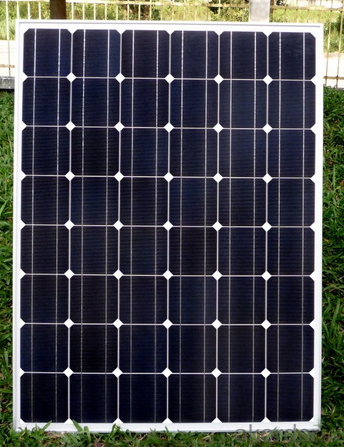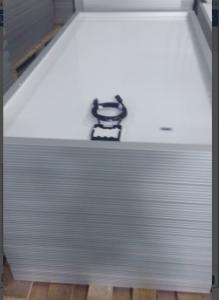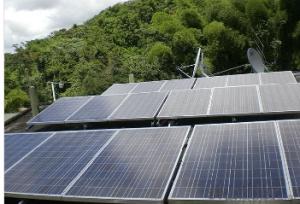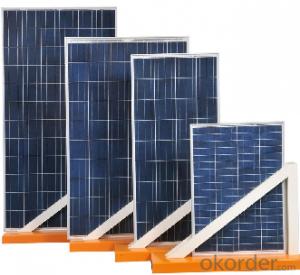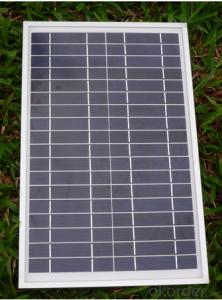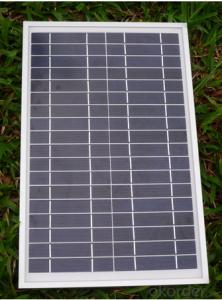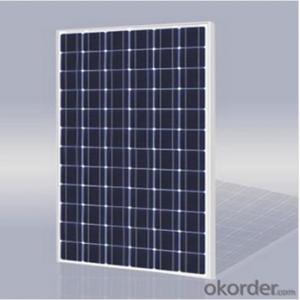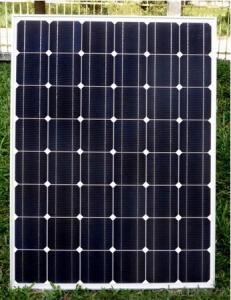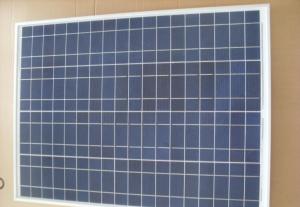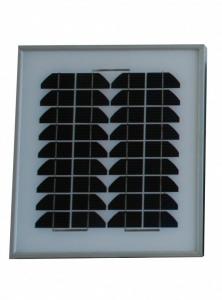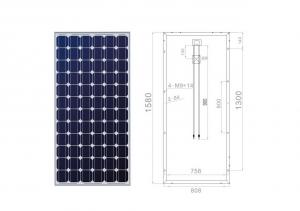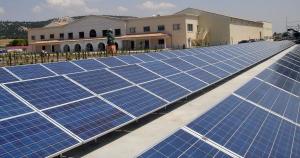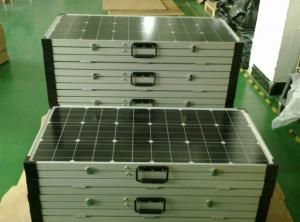Lcec Solar Panels - Poly Solar Panel 295W A Grade with Cheapest Price
- Loading Port:
- Shanghai
- Payment Terms:
- TT OR LC
- Min Order Qty:
- 100 watt
- Supply Capability:
- 50000 watt/month
OKorder Service Pledge
OKorder Financial Service
You Might Also Like
Specification
Poly Solar Panel 295W A Grade with Cheapest Price
Product description
60 cell multi-crystalline solar module. 40mm natural anodised frame. IP65 rated Jbox, 1m solar cable and a pair of MC4 connectors.TÜV SÜD,SABS ISO 9001:2008 certified.
Nominal voltage refers to the voltage of the battery that the module is best suited to charge; this is a leftover term from the days when solar modules were only used to charge batteries. The actual voltage output of the module changes as lighting, temperature and load conditions change, so there is never one specific voltage at which the module operates. Nominal voltage allows users, at a glance, to make sure the module is compatible with a given system.
The peak power rating, Wp, is the maximum output under standard test conditions (not the maximum possible output). Typical modules, which could measure approximately 1x2 meters or 2x4 feet, will be rated from as low as 75 watts to as high as 350 watts, depending on their efficiency. At the time of testing, the test modules are binned according to their test results, and a typical manufacturer might rate their modules in 5 watt increments, and either rate them at +/- 3%, +/-5%, +3/-0% or +5/-0%.

Application
Industrial
Commercial
Residential
Product feather
solar panel refers to a panel designed to absorb the sun's rays as a source of energy for generating electricity or heating.
A photovoltaic (in short PV) module is a packaged, connected assembly of typically 6×10 solar cells. Solar Photovoltaic panels constitute the solar array of a photovoltaic system that generates and supplies solar electricityin commercial and residential applications. Each module is rated by its DC output power under standard test conditions, and typically ranges from 100 to 365 watts. The efficiency of a module determines the area of a module given the same rated output – an 8% efficient 230 watt module will have twice the area of a 16% efficient 230 watt module. There are a few solar panels available that are exceeding 19% efficiency. A single solar module can produce only a limited amount of power; most installations contain multiple modules. A photovoltaic system typically includes a panel or an array of solar modules, a solar inverter, and sometimes a battery and/or solar tracker and interconnection wiring.
Packaging
24-26pcs into carton 312pcs for 20 foot container 712pcs for 40 foot container.
- Q: they are pretty expensive. So does it save you money on electricity in the long run? How easy is it to connect solar panels to your house?
- yes. Its pretty simple connection. It does save money on electricity.
- Q: . The 2v battery will only be turning a small 2v motor that will be turning very slowly yet possibly or a long time. 2. -2 hours max per day it will be running3. I want it to be fully sufficient on solar power once the energy in the battery runs out. What specifications for my panel do you think I will need. However, i have limited space so the smaller the better as long as it can do the jobP.S: I don't know much about electricity and solar power so simple answers please :)
- batteries are rated with the help of the CCA, chilly cranking Amps the better the CCa the longer it is going to very last, don,t imagine you want a charge Controller as your consistently drawing juice from it, the picture voltaic panel will keep the bat at its height , then even as the solar is down , the pump will draw off the bat,
- Q: Hi, I want to put some solar light in my yard, and wondering if a 00w solar panel could work for a few 3w dc lights....do i need a battery so they run at night, if so how many lights do u think i can run/ also i see elading solar light
- No longer just any bulb will work on DC power. Any light bulb that's for 0voltage won't work on DC energy due to the fact that the element has too much resistance for a DC vigor provide to create ample heat to generate mild from the aspect. Nonetheless the do make mild bulbs that are designed to function on a DC energy supply and i might extremely recomend making use of the proper bulb with the proper vigour provide. Purchase some 2volt bulbs to be dependable......
- Q: Are there any maintenance requirements for solar panels?
- Yes, solar panels do require some maintenance. Regular cleaning of the panels to remove dirt, dust, and debris is recommended to ensure optimal performance. Additionally, it is important to inspect the panels for any signs of damage or wear, and if necessary, have them repaired or replaced. Monitoring the system's performance and checking the connections regularly is also crucial for identifying any issues.
- Q: I live in Sacramento, CA, and I need some solar panels for a project fo school. They don't have to be very big......just something that I can use as an example.Thanks!
- I did the same thing recently, if you'd really like some free ones then you need to look for those little solar powered lamps that people put in their yards, theyre about 0 inches tall and people sometimes line the paths through their yard with them. Maybe you can find a neighbor who doesn't want theirs anymore, or you could check local dumps for them. They each have a solar panel in the top, and they can be linked together to make more power. Alternatively, you can look on OKorder for a pack of broken solar cells, which still work fine but don't put out quite as much power as they did when they were new. However, they are very cheap. Hope this helps.
- Q: I'm part of the Sustainability group at school, the school principal is a d**k and doesn't care about the environment, he only cares about money.Me and the group will be talking in front of him and the school council (the people in-charge of the school's money) To convince them to put solar panels on the school roofs.I know that it definitely will help the school save on electricity bills, but it WILL cost a lot of money to put them in.In the end we just wanna reduce carbon emissions!HELP :)
- Unfortunately installing Photoelectric Solar panels on your school would probably cost more than the entire school budget. In order to make this sort of proposal you would need to have some hard numbers to show exact dollar amounts of costs and benefits. You would need multiple quotes from companies that install solar panels and information from the electrical company that would have to tie the system into their grid. This is a HUGE undertaking. If you really want to reduce carbon emissions, suggest ways to reduce the energy use within the school instead of converting to solar. Better windows, doors, and roof insulation. If you have a leaky roof, fixing that would get rid of water damage and better insulate the school thus saving energy. Suggest plans to reduce electrical usage like having computers go into Hibernate mode after 0 minutes, turning off lights in rooms that aren't getting used, etc... Many people are fooled into thinking that solar power is this awesome free energy source. IT is NOT. Solar panels are great for powering small items or for getting power when you have no other way of getting connected. However it takes MORE electricity to create a solar panel than the solar panel will ever produce in it's ENTIRE lifetime. Do some research into the production of silicon crystal and semiconductors and find out how solar panels are made. Until the technology improves greatly, solar is not a green power source other than generating money.
- Q: I am working on a project and I have to build a house with solar panels. My teacher asked me how would I get solar energy if it is rainy or cloudy? I looked it up but didn't understand. Please help me!!
- Solar panels convert light energy into electrical energy with the photovoltaic process. They work best when perpendicular to the incoming sunlight and with no clouds in bright sunlight. They will work at reduced efficiency if there are clouds or rain, but as long as its not dark, they will still produce some electricity. That is one of the real problems with solar energy, as we expect to have electricity available on demand, regardless of day/night cycles and atmospheric conditions. Storing electricity is very inefficient, so we need hydro, nuclear,or fossil fuel energy to provide firm on demand energy as a base load.
- Q: please help me
- Photovoltaic cells work because of the photoelectric effect. However, a solar panel can actually be using several different technologies that have the same common effect of generating electricity when the sun shines on them.
- Q: I'm making a model of a solar photovoltaic tower for a school project. I need a way to store energy, and we thought about using capacitors (mainly because of our somewhat limited funding). The tower will have a small photovoltaic panel (around the size of a laptop keyboard with number pad) and some (around 50) quot;heliostats(just the mirrors, no moving parts). What kind of capacitors should i use? and would a capacitor bank be better? i am getting confused with all those uF, pF and can't see the difference.Thanx in advance
- Solar Capacitor
- Q: I am doing a project for school and i need to power a 9v DC motor using a solar panel. Does anyone know places i could get these for not to expensive, and how many volts/watts i would need?
- Radio Shack.
Send your message to us
Lcec Solar Panels - Poly Solar Panel 295W A Grade with Cheapest Price
- Loading Port:
- Shanghai
- Payment Terms:
- TT OR LC
- Min Order Qty:
- 100 watt
- Supply Capability:
- 50000 watt/month
OKorder Service Pledge
OKorder Financial Service
Similar products
Hot products
Hot Searches
Related keywords
